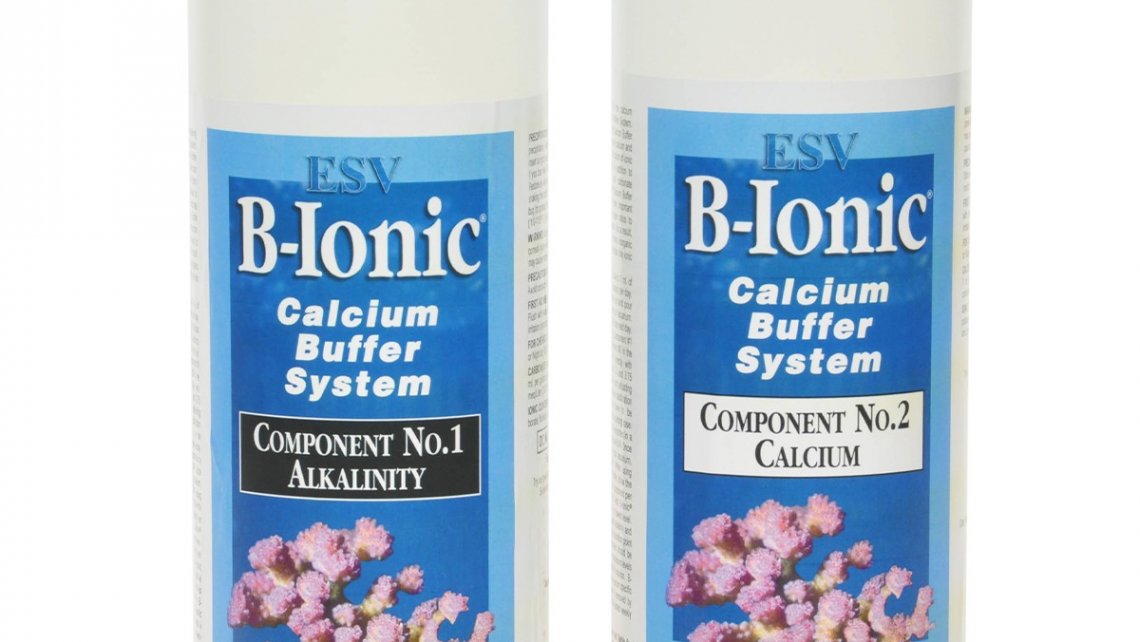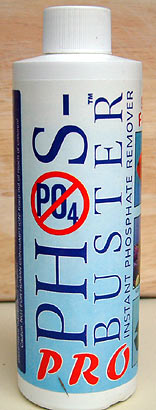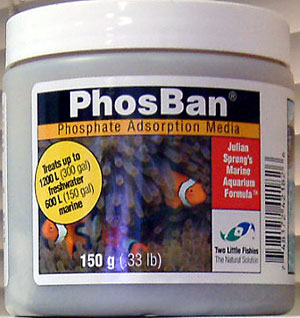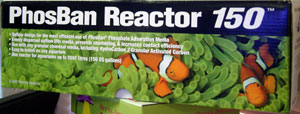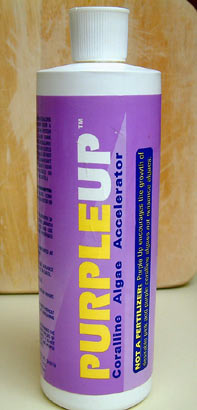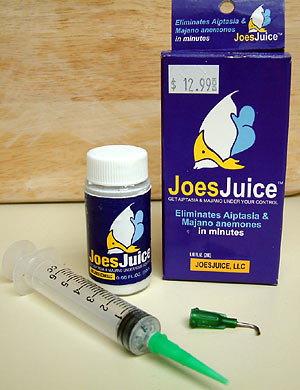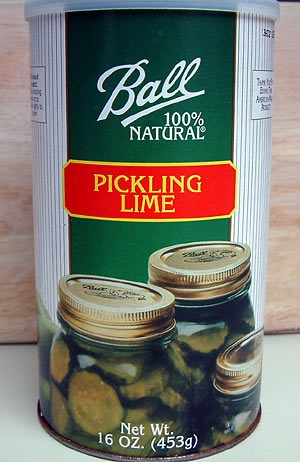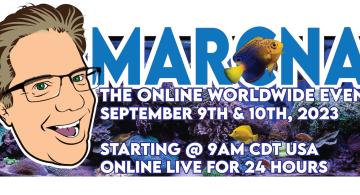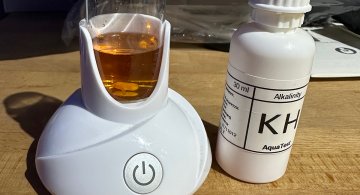Various Chemicals Solutions
Caring for our aquariums, we often run into any number of problems that may be resolved with time and water changes, but at times it may require a chemical solution instead. This webpage is designed to show you some of the products that I have used in the past 8 years, and what types of results I obtained, if any at all. Remember, what you choose to dose in your tank may produce negative results and thus it may be best to remain patient and not dose a particular product.
There usually are no quick solutions: Nothing good ever happens fast in a reef tank.
Some products are used regularly - maintaining good water parameters; or as an absorber to improve water quality.
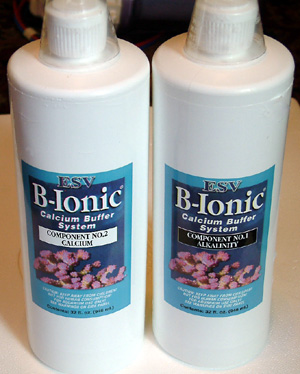 |
ESV's B-Ionic - This product maintains Alkalinity, Calcium and pH levels when dosed daily. It is recommended to dose it early in the morning when pH is at its lowest, and it should be dosed slowly in an area of high flow. When I dosed my 29g and my 55g, I would pour the correct dose of Part 1 very slowly over 15 seconds. Once done, repeat with Part 2 the exact same way. If it is dumped in at once, the concentrated solution is super saturated in one spot temporarily and may even precipate out of the water - which would make the dose ineffective or even defunct. I used B-Ionic for 2 years with excellent results, and it will definitely promote coralline algae growth. To the left, you can see quart bottles of each part. This is the best way to dose the tank, using the small dosing cups that come with them. So buy a set from your LFS or online. However, purchasing it by the gallon or even the five gallon bucket saves you the most money. I would either buy it by the bucket for myself, or share the buckets' volume with a couple of people in our club to spread out the cost of product and shipping. Refilling the quart bottles once a month worked great. |
|
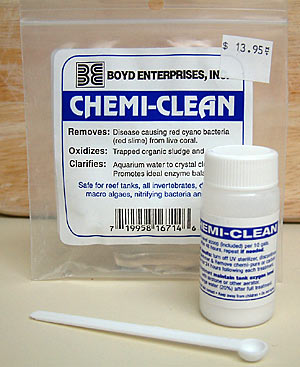 |
Boyd Enterprises' ChemiClean - This product is designed to remove Cyano Bacteria. Cyano is often referred to as red algae, but since it is actually bacteria in nature, it has to be resolved a little differently. If you prefer to avoid using a product in your tank, increase the flow in the area where cyano grows, do water changes, skim well, and double check the age of your bulbs. Over a period of a few weeks, it will die off. Using a turkey baster, you can blow it off the rock and corals, and with flexible tubing it can be siphoned out of your tank. I have waited it out for weeks before, and it did go away. I have used ChemiClean many times, and never lost any livestock at all. The product is great. Mix it well up in a cup of RO water, using the correct dosage for your tank, and pour it in an area of high flow. Turn off the protein skimmer for 48 hours. Within 24 hours, all cyano should be dead and gone. Its main ingredient is erythromycin (I think), and this kills off the bacteria as promised. It is recommended to change 20% of the water after the treatment has concluded. With the skimmer being off, it might be wise to hook up an airpump and put an airstone in the display area of the tank to maintain good oxygenation. Running carbon after treating would be wise. Another similar product I use is RedCyano Rx. |
|
 |
Carbon - running carbon actively will yield good results in water clarity, and absorb some things from the water. If you've treated your tank with another product to solve a problem, running fresh carbon should remove that product now. Or if your soft corals are slumping over, carbon may remove some of the chemicals corals exude in 'chemical warfare.' They should perk right back in within a few days. I only run carbon 3 days per month, and believe running it longer is ineffective. Carbon can only absorb so much and after that it may simply become a nitrate bed instead. If it is tossed in a small mesh bag in the sump (passive filtration), it will not work as well as it would in a canister filter or some other system that forces water through it (active filtration). The Phosban reactor is a nice choice to run carbon. I recommend you read this article to get more insight about using carbon. And remember: Charcoal is for grilling, carbon is for filtering. ;) |
|
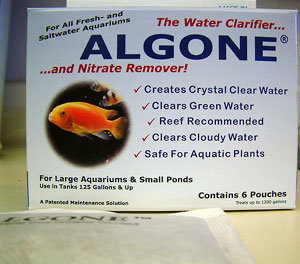 |
Algone - This one is new to me, but it promises to clear up a cloudy tank. I'm using it to lower nitrates in my reef tank. Each box contains 6 little pillows that you can float in your sump in an area of good flow. Each pouch is designed to handle up to 200g of water. The jury is out on this one currently (September 2005). |
|
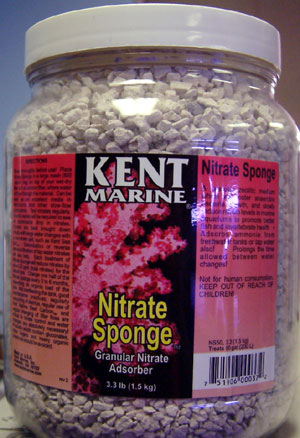 |
Kent Nitrate Sponge - A one pound container of these granules will treat a 50g aquarium, and it really works. I put half a pound in one canister filter, and half a pound in another one, and let it run for 48 hours. It brought nitrates way down. Once the time has elapsed, remove it from your system to avoid it releasing back into the water. Do I recommend this as a chemical solution? If your test numbers are sky high - yes. However, you must remove what is creating them in the first place. Please read this article, and resolve those issues first. Once that is done, big water changes will usually solve the problem better than using a chemical solution. |
|
|
|
Kent Phosphate Sponge - Similar to Kent's Nitrate Sponge, this granular product will remove phosphate. When my tank tested 2.0, I used this product in a canister filter. 48 hours later, PO4 tested at .2ppm - quite a substatial drop, right? Remove this product promptly to avoid it from releasing the PO4 back into the tank. This product is aluminum-based, and leathers will respond poorly to it. Mine shrunk down for about 3 weeks before it recovered. I won't use it again. (Aluminum-based) |
|
|
|
CaribSea's Phosbuster Pro - Liquid Gold! Yeah, I sound like a salesman. :) I used a lot of products trying to bring the PO4 levels down in my 280g reef, and nothing was working well enough. This product is a flocculant, and what it does is convert phosphate into a fine dust particle that can be trapped with filtration or exported with a good protein skimmer. I dosed my tank several times with it, and readings have dropped from 3.0 to .1ppm When treating, I chose to use it at night when the fish were asleep (rather than when they are most active) just in case it was an irritant to their gills. Phosbuster Pro can lower alkalinity in the water, so be sure to measure that level before dosing. CaribSea recommends raising alkalinity 10 minutes before dosing, which I did. My tank runs around 11 dKH, and my livestock did fine. If you have a Yellow Tang, you might be wise to remove that fish from the tank before dosing. CaribSea was aware of a number of yellow tangs dying after the tank was treated during the first year of this produt coming to market, so they diluted the product further. I wouldn't hesitate to use this, or Phosphate Rx. |
|
|
|
Two Little Fishies' Phosban - About two years ago, everyone was excited to order a "phosban reactor" for about $35 online. I mean, everyone was ordering, and people were on waiting lists. It was crazy. I didn't even know what the big deal was. The phosban reactor is a clear acrylic container that you can hang on your tank or sump, which you'd fill up with Phosban - a fine powdery substance that absorbs phosphate from the water. The reason it was so popular was because it would force water through the media and didn't cost a fortune. A very small powerhead is all that is needed, moving no more than 90gph through it. It really does work well, and the Phosban Reactor has become a great tool for hobbyists needing to run other products as well, such as Carbon. Each reactor is rated for 150g, and the container of Phosban treats about the same. Buying Phosban in buckets is cheaper than the smaller individual containers. I use two Phosban Reactors on my 280g reef, and they are doing the job now that the levels are lowered to something they can handle. FYI, the newest reactor is much easier to open and close, as the entire top twists off in a quarter turn, and has elbows where the tubing connects. This is a major improvement from the older model that had 10 or more screws holding the lid down, and nipples pointing straight up to receive the necessary tubing (which you can see in the linked picture above). Once the reactor has been filled and sealed, it would be wise to run 3g of RO water through it in the sink, to wash out the "fines" (red dust) so that it doesn't release these in your tank or sump. I also stuff a little polyester padding in the top of my reactor to keep the larger fines from escaping. This is a good product that doesn't really have negatives. It has to be replaced when it clumps up, which may be as much as 60 days later. (Iron-based)Supplemental article. |
|
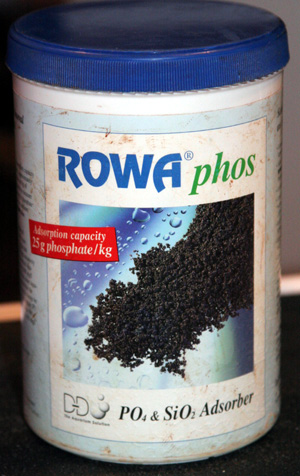 |
ROWAphos - Similar to Phosban, this product should be used in a fluidize reactor. ROWAphos arrives in a sealed container and is rather moist. It looks like a jar of rust which, in essence, it is. I've used it in the past and am currently using it. A large container is $65 online and treats about 450g, which is rather expensive compared to the amount of Phosban you get in a bucket. You need to rinse out ROWAphos. It is recommended to slow down the flow to the point that what is coming out of the fluidized reactor produces a 0 phosphate reading. What I do is set up the reactor in my sump, let it run very slowly in a bucket next to the sump until the effluent comes out clear. After about 3 gallons have collected, it is ready to drain into the sump itself. (Iron-based) |
|
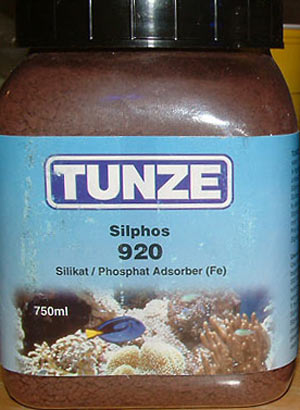 |
Tunze Silphos - I used this product for several weeks, and it worked okay. Perhaps if I'd continued to use it in larger quantities, I may have had better results. You must rinse it very well, and even after you do that, once you hook it up (this is the method Tunze recommends), it will release a red cloud in your tank. You can use it un-rinsed if you have to bring PO4 down quickly, but expect your tank to look like the surface of Mars in a sand storm. Yes, I did that once and it was a tad scary. However, the next day all looked perfectly fine. One container will fill up the filter basket two times, and I used two containers worth trying to bring PO4 levels down in my tank. Silphos will also reduce silicates in the water as well. (Iron-based) |
|
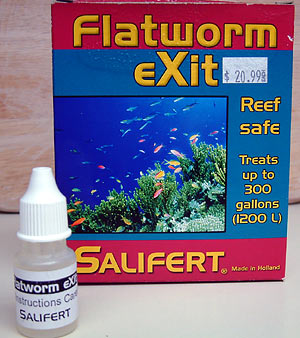 |
Salifert's Flatworm eXit - This product will kill flatworms. I've used it when necessary, and suffered no losses. Please be sure to read this page several times, and if you follow my guidelines you should have success as well. The product will not hurt your livestock, but dying flatworms release toxin that will. READ my guidelines, PLEASE. I've used this product a few times, always with great results. It would be wise to always have this on hand for any new arrivals. Just add two or three drops to the bag holding the new frag or coral, and let it do its thing as the coral is floating during acclimation. If any flatworms were present, they'll be dead. Rinse the coral in a container of tank water, shaking off any hidden flatworms, and place in your tank without fear. Being proactive in this regard will keep your system flatworm free. |
|
|
|
CaribSea's Purple Up - This product contains the necessary elements to increase coralline algae growth in your tank. I've used it a few times and it works. It will not create it from nothing - but it will encourage growth if there is any coralline in your tank. I've used it a few times now, and in addition to healthy water with proper seawater levels, coralline is now growing on the back wall of my tank rapidly. |
|
|
|
Joe's Juice is a product made specifically to kill aiptasia or anemonia majanosin your reef tank. The product is easy to use. I've been told in Europe, hobbyists are getting great results with this product. Shake it up well, then fill the syringe. I turn off the pumps in my tank during application, and then slowly depress the plunger to drop a small pile on the mouth area of the aiptasia. Try not to frighten the glass anemone by touching it, so that it will simply close up over the food and injest it. For best results, be vigilant and feed them daily until you can't find any at all. If you only do this once a week or once a month, the problem will never be resolved. New tips (see picture) may be purchased separately to get to those that aren't easily accessible.
|
|
|
|
Pickling Lime is another product used to kill aiptasia. Actually, I think we've pretty much tried anything we can get our hands on in that battle. ;) Pickling Lime can be used for kalkwasser, which many opt to use to top off their tanks to replace what has evaporated. Usually 1 to 2 teaspoons per gallon is about right. I add a rounded teaspoon of powder for each gallon of RO/DI water, and mix it well. After it has settled for one hour, I'll start to drip it into my sump, in an area of good flow so it can mix in and be pumped back up to the tank. Be sure not to disturb or add any of the sediment at the base of the top off container. Kalkwasser has a pH of 12, which is why it is recommended to drip it into your tank rather than pouring it in at once. Such high pH will burn some corals and possibly hurt the gills of fish, so be wise and use precautions. When setting up your system, it would be smart to limit any potential disaster by only mixing it in small amounts. A couple of gallons won't hurt your tank where a full 35g trashcan might, if it all added at once due to human error or mechanical failure. For years, I've avoided using it because I've read about tank after tank being decimated due to a huge accidental overdose. So be careful, and control the worst case senario. If you do that, you'll have nothing to worry about. Ball's Pickling Lime or Mrs Wages are both safe. For my tank, I have 6g mixed up at a time, and if it all dumped into the 280g reef, pH would only rise to 8.45 - not a problem. Kalkwasser helps maintain pH, alkalinity and calcium levels cheaply. Supplemental article. |
|
 |
3% Peroxide. The same stuff we use to clean a wound can be used to treat a reef with a Dinoflagellate outbreak. The general rule is 1 ml per 10-gallons of actual water volume, treated daily for eight days in a row. Livestock is unaffected but the dinoflagellates will lessen daily. Do not disable any filtration - leave everything running as usual. If this is a massive outbreak, as always I'd recommend siphoning out all you can first to reduce its density in the system. Clean and remove anything coated (locline fittings, cleaning magnets, frag racks) with the outbreak away from the tank, then reinstall. |
I hope this information helps provide some answers to some common issues, but remember results may vary. Do your homework first!
